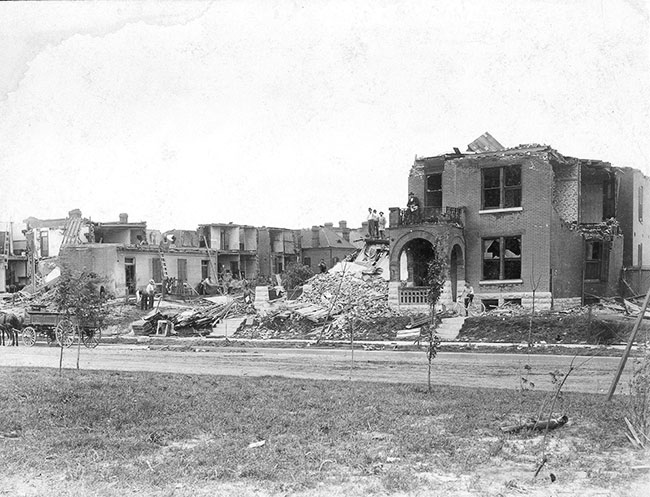


See the damage caused to St. Louis’ residential areas.

The “Cracker Castle”. This mansion, built by Jonathan O. Pierce in the 1860s, was nicknamed the Cracker Castle because Pierce's fortune came from part ownership of a business that supplied crackers and hardtack to soldiers during the Civil War. Located at the corner of Chouteau and St. Ange Avenues, it was struck by lightning and one of its towers was hurled away during the terrible tornado. It was damaged beyond repair and was demolished.
The Compton Heights neighborhood, laid out in 1889, was an early planned residential development. Its streets curve gently around landscaped areas in a deliberate change from the traditional grid pattern, and are named for important literary figures. Many of the upper class homes built there lost walls and roofs to the tornado.
The Compton Heights neighborhood, laid out in 1889, was an early planned residential development. This group of homes was all but destroyed by the tornado. The photograph identifies one of these homes as that of Dr. Hugo M. Starkloff, physician and father of St. Louis' famous Health Commissioner Dr. Max Starkloff.
The tornado did some of its worst damage on Rutger Street between 7th and 8th streets in the northern Soulard neighborhood. Most buildings were destroyed, and many lives were lost. This view of Rutger looking east from 7th Street shows the large crowd that gathered to view the damage and mourn the next day.
